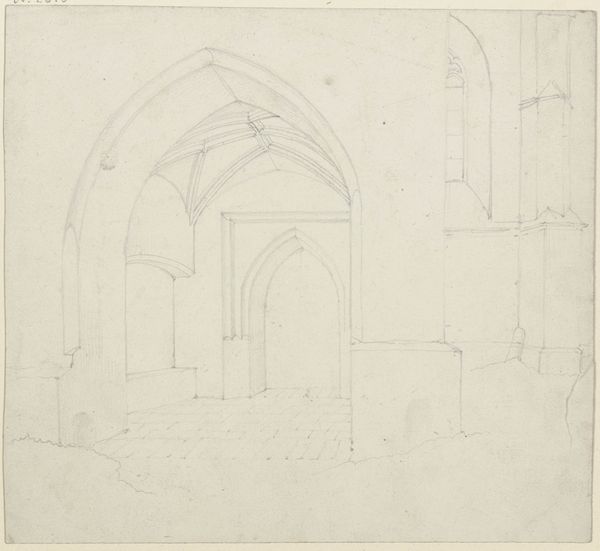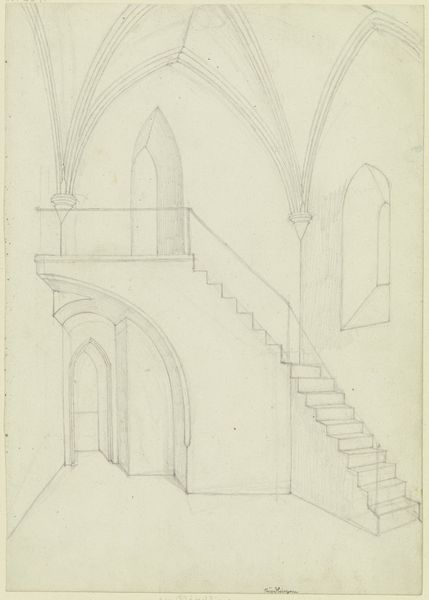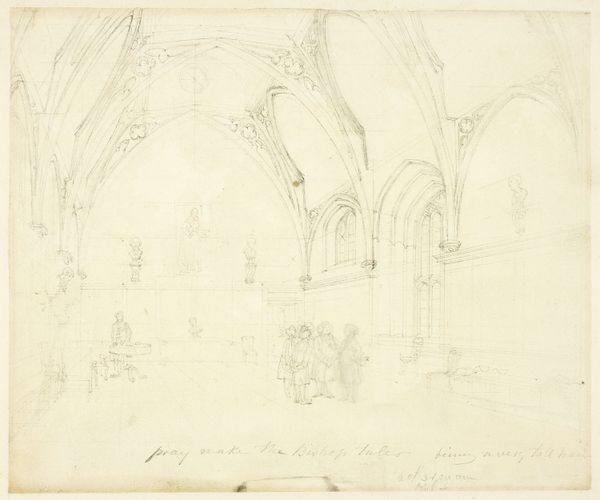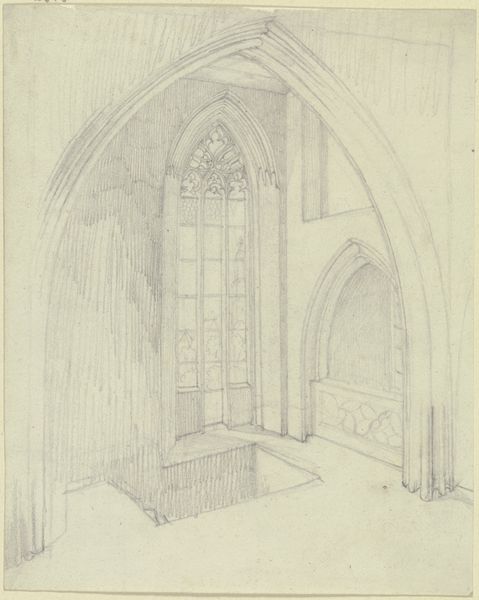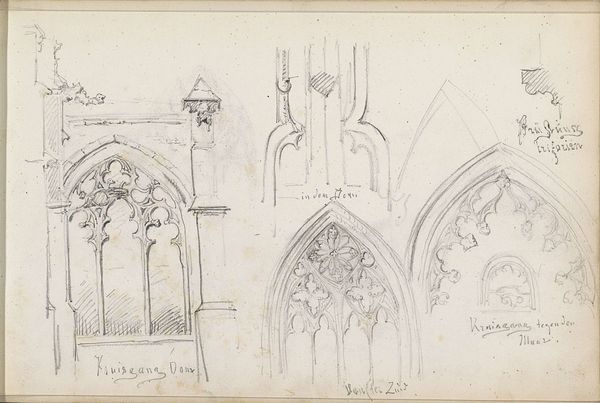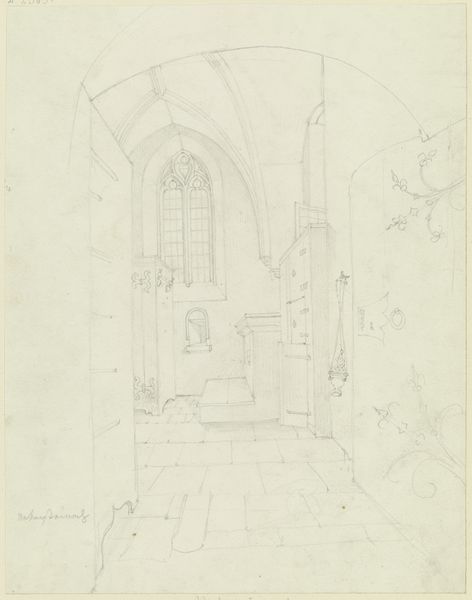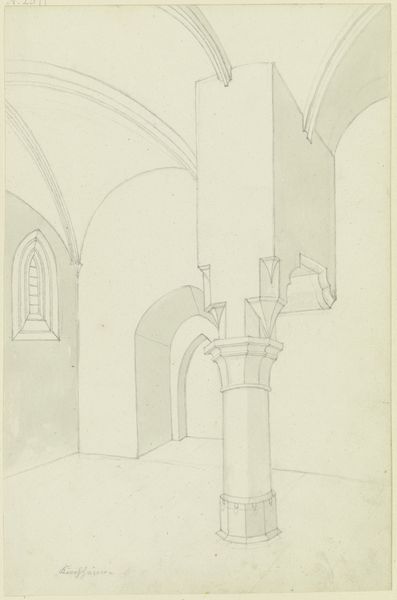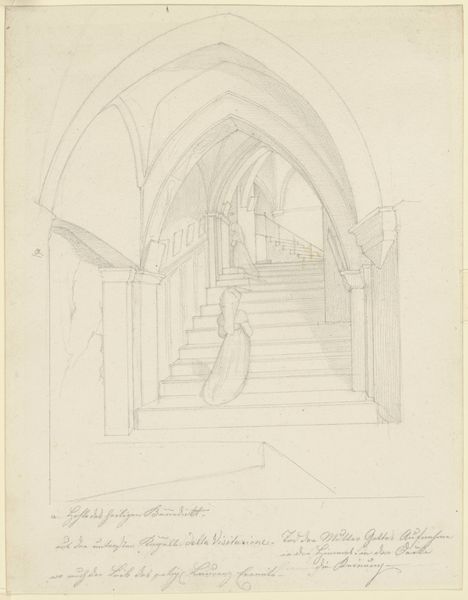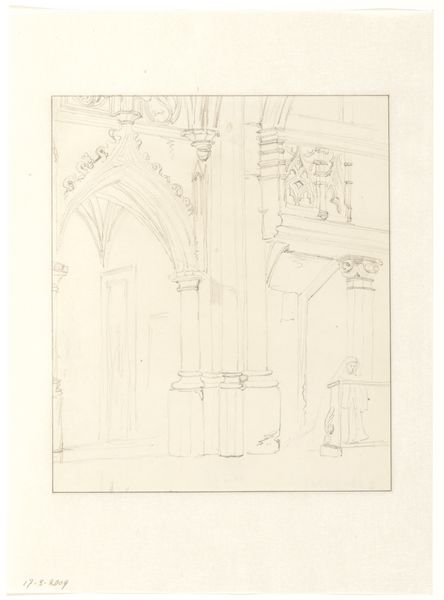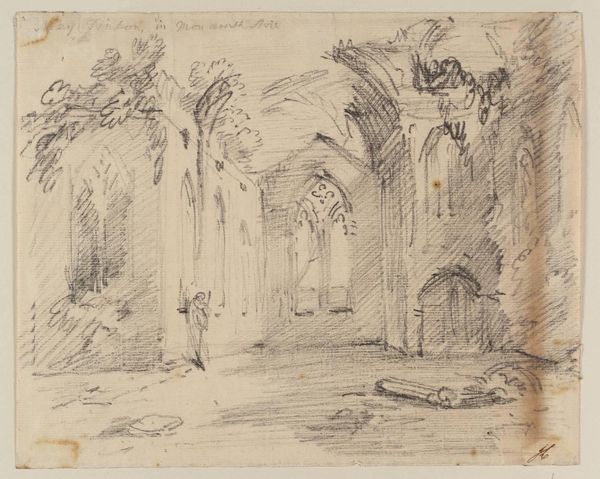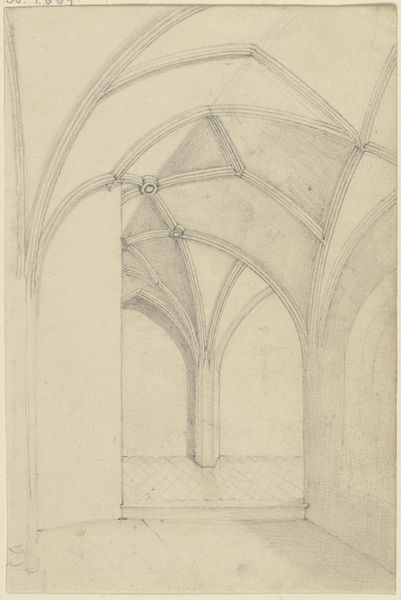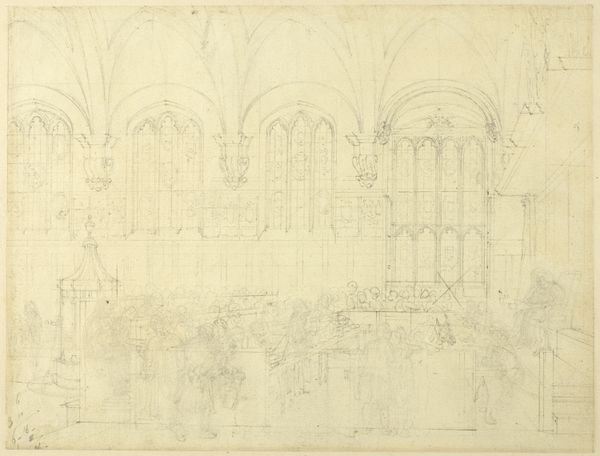
drawing, pencil, architecture
#
drawing
#
landscape
#
geometric
#
pencil
#
architecture
Copyright: Public Domain
Curator: Welcome, everyone. We're standing before Fritz Bamberger's "Das Kloster Santa Scolastica bei Subiaco," a pencil drawing of the Santa Scolastica Monastery. Editor: My first impression? Serenity. The sparseness of the pencil strokes lends a certain quietude, even if the geometry of the arches speaks to an institutional presence. It’s as if the drawing captures a moment suspended in time, absent of turmoil. Curator: Absolutely. Bamberger really captured the spiritual weight of the place, but I also see in it a sort of idealization, perhaps colored by the Romantic period's fascination with the past and religious devotion. Note, also, the deliberate use of light and shadow that draws your attention through the cloister and also onto a single, cloaked figure, emphasizing architectural rhythm. Editor: That hooded figure seems significant, but they’re not at the center of the frame. Rather, the architecture itself occupies a privileged position, highlighting the institution's role. Think about it – what histories are built into those arches? Power, religion, knowledge – all concentrated in a single space. And who is given the honor to inhabit those spaces and beliefs? Who gets excluded? Curator: Yes, that form seems so rooted in the Gothic arch's historical associations—pointed arches directing the gaze towards heavenly spaces but also echoing the formal, structured power of the Church through space. Editor: Also, let’s look beyond just the immediate image of the church, considering the larger social, cultural, and gender contexts present within the monastery’s long history, its role in the history of Western society and patriarchal hierarchies… and notice those free-floating architectural elements off to the side. What is the artist doing there? Curator: Yes, those studies almost serve as an index to various architectural devices. To me, those floating elements feel like Bamberger highlighting a conscious visual grammar, of repeating motifs and archetypes—a formal visual language developed over time. They could be highlighting the individual and timeless spirit as if they’ve always been there in the world. Editor: Right. That "always been there" argument—precisely why we need to situate artwork in a larger field of history and systems, so we don’t essentialize elements like those, when, in fact, such architecture grew out of, and participated in, definite power structures, impacting every level of daily life. Curator: I see that clearly. A perspective I will never unsee now. Editor: Good, me neither!
Comments
No comments
Be the first to comment and join the conversation on the ultimate creative platform.
